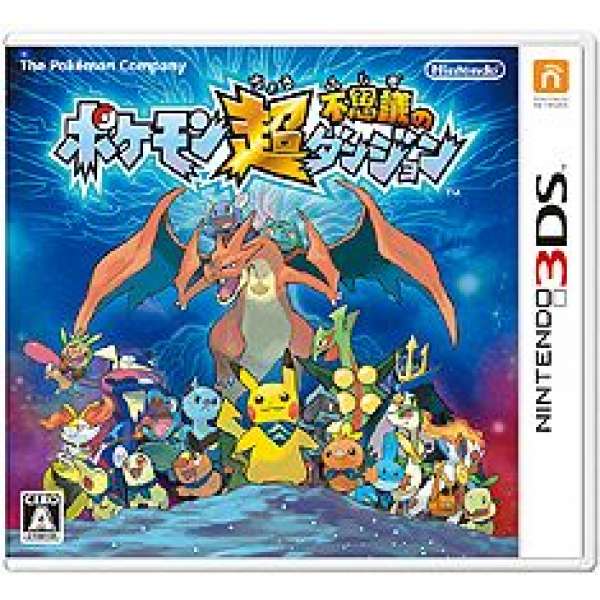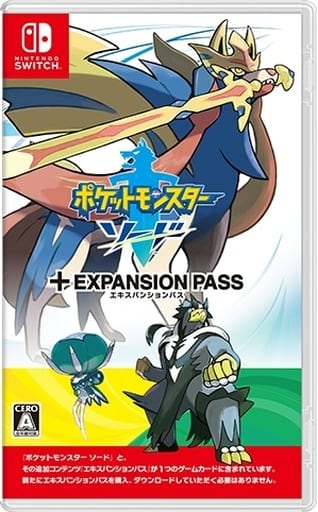任天堂2DS主機『神奇寶貝 紅』限量版包
《寶可夢》(Pokémon)是由Game Freak開發,任天堂發行的一個受歡迎的角色扮演遊戲系列。系列於1996年首次在Game Boy上推出,並迅速取得了巨大成功。《寶可夢》系列以捕捉、訓練和對戰可愛的怪獸(寶可夢)為主要特點,成為全球性的文化現象。
一開始推出時任天堂並不看好,遊戲缺乏預算推廣,初期銷售數字相當慘澹。但開發商社長田尻智並不死心,積極推出卡通,造成極大的轟動。任天堂驚覺當初不看好收集寶物遊戲是錯誤決定,於是入股Game Freak並積極推出一系列漫畫及電視電影,目前相關商品已創造超過數兆台幣的驚人產值,系列遊戲全球銷售更是破億。
Game Boy初期推出紅跟綠版本,之後銷售的藍版則是針對之前兩款遊戲的問題進行改良,最後的黃版則是紀念動漫所發行,在90年代推出第一代總共有六款, 分別有紅、綠、藍、皮卡丘版(黃)、火紅、葉綠版。
一開始玩家會出現在若葉鎮,往樓下移動後會發現媽媽並提供一台口袋通訊機,接著前往伍茲博士研發中心協助找回被偷走的怪物蛋,主角任務就是收集八個道館勳章後,參加怪獸冠軍決賽,挑戰四大天王並爭取冠軍。冒險旅程中需要阻止利用寶可夢作壞事的其他玩家,收集寶可夢並與他人交換,進而培養出最強寶可夢,特殊寶可夢則需要通訊交換取得。
玩法: 《寶可夢》遊戲的基本玩法是探索虛構的世界,捕捉野生的寶可夢,進行訓練和對戰,並完成遊戲中的目標。玩家扮演一名「寶可夢訓練師」,旅行在各個地方,收集不同種類的寶可夢,並逐漸提升他們的等級和能力。
操作: 操作取決於不同版本的遊戲,但通常在Game Boy上,將使用方向鍵來移動角色,使用A和B按鈕進行選擇和確認,並使用選項鍵來打開菜單和執行其他操作。遊戲通常以頂部視圖或俯視視圖顯示角色和遊戲世界。
主要版本: 自Game Boy推出以來,已經推出多個主要版本的《寶可夢》遊戲,其中一些包括:
《精靈寶可夢紅/綠》(Pokémon Red/Blue):這是系列的首發遊戲,於1996年在日本推出,隨後在其他地區推出。玩家扮演訓練師,捕捉寶可夢,與其他訓練師進行對戰,最終成為寶可夢大師。
《精靈寶可夢金/銀》(Pokémon Gold/Silver):這是續作,於1999年在日本推出。引入新的寶可夢和遊戲功能,同時承襲前作的核心玩法。
《精靈寶可夢火紅/葉綠》(Pokémon FireRed/LeafGreen):這是《精靈寶可夢紅/綠》的重製版本,於2004年推出,具有圖形和遊戲性的改進。
其他版本:隨著時間的推移,還推出更多版本,包括《寶可夢水晶》、《寶可夢綠寶石/紅寶石》、《寶可夢鑽石/珍珠》等。每個版本都有自己獨特的寶可夢、地區和故事。
隨著時間的推移,Game Boy遊戲《寶可夢》系列不斷進行更新和演變,並推出許多不同版本和衍生作品。以下是一些值得注意的版本和演變:
《精靈寶可夢黃》(Pokémon Yellow):這是《精靈寶可夢紅/綠》的改進版本,根據動畫劇情,玩家開始時將獲得皮卡丘作為起始寶可夢,並與其一起冒險。
《精靈寶可夢金/銀》的補充版本:隨後推出的版本包括《精靈寶可夢水晶》(Crystal),在原版本基礎上增加新的功能、故事情節和動畫效果。
第三代寶可夢遊戲:Game Boy Advance上推出第三代寶可夢遊戲,包括《寶可夢紅寶石/藍寶石》、《寶可夢綠寶石/紅寶石》以及後來的《寶可夢翠綠》(Emerald)。這些遊戲引入新的寶可夢、地區和功能。
第四代寶可夢遊戲:任天堂DS平台上推出第四代寶可夢遊戲,包括《寶可夢鑽石/珍珠》和後來的《寶可夢白金》(Platinum)。這些遊戲引入新的3D圖形、線上交易和更多功能。
其他衍生作品:除了主要版本外,還有許多衍生作品,如《寶可夢解謎樂園》(Pokémon Puzzle League)、《寶可夢大師》(Pokémon Master)等,這些作品在玩法和類型上有所不同。
重製版:隨著技術的進步,過去的《寶可夢》遊戲展開重製和移植,以提供更現代的圖形和功能。例如,《寶可夢火紅/葉綠》的重製版是《寶可夢心金/靈魂銀》(HeartGold/SoulSilver),它們引入新的要素和改進。
銷售數據: 寶可夢系列遊戲在Game Boy平台上取得巨大的成功,成為最暢銷的遊戲之一。許多遊戲版本在全球范圍內銷售數百萬份,並且遊戲系列已經賣出數億份套。這些遊戲的銷售數據在不同版本之間有所不同,但它們都是受歡迎且受到擁護的遊戲。
結局: 寶可夢遊戲的結局取決於遊戲版本和故事情節,玩家通常需要完成一系列的任務和挑戰,最終達到主要目標。在遊戲中將與其他寶可夢訓練師進行對戰、解謎,並最終挑戰各地區的寶可夢聯盟。不同版本的遊戲可能有不同的故事結局。
在Game Boy遊戲《寶可夢》系列中,每個寶可夢都有自己的屬性、能力和特點。最強的寶可夢取決於多個因素,包括基本能力、種族值、技能、屬性相剋等。不同版本的遊戲可能會有不同的寶可夢被認為是最強的,因此以下僅提供一些在多個版本中被認為是強大的寶可夢。
在寶可夢世界中,通常會有一些被認為是「傳說」或「神話」等特殊寶可夢,它們在屬性、能力和外觀方面都非常強大。以下是一些受歡迎的強大寶可夢:
Mewtwo:精靈力量極高的超能寶可夢,是隱藏在遊戲中的「傳說」。是第一代寶可夢的代表之一。
Rayquaza:第三代寶可夢的「天線寶可夢」,能力和攻擊數據非常強大。
Arceus:被稱為「神的寶可夢」,據說是寶可夢世界的創造者。
Dialga、Palkia、Giratina:這些寶可夢代表時間、空間和反轉,分別是第四代寶可夢的主要「傳說」。
Reshiram、Zekrom、Kyurem:第五代寶可夢的「傳說」,它們分別代表真理、規則和融合。
Xerneas、Yveltal:第六代寶可夢的「傳說」,它們代表生命和毀滅。
Solgaleo、Lunala:第七代寶可夢的「傳說」,它們代表日與月。
Eternatus:第八代寶可夢的「傳說」,是《劍/盾》遊戲中的主要角色之一。
捕捉強大的寶可夢,需要遵循一些基本的步驟和策略。以下是一些可能幫助捕捉最強寶可夢的方法:
1. 確認寶可夢的位置:首先,需要知道要捕捉的寶可夢在遊戲中的位置。寶可夢通常會出現在特定的區域或地點,因此需要查詢遊戲指南或網絡資源,以確定它們的位置。
2. 準備好捕捉道具:確保擁有足夠的捕捉道具,如寶可夢球、高級球等。不同的寶可夢可能對不同類型的捕捉球有不同的反應,所以最好準備多種選擇。
3. 弱化寶可夢:在戰鬥中,嘗試降低寶可夢的HP,使其處於較弱的狀態。使用一些不會造成太大傷害的技能,以免將寶可夢擊倒。
4. 使用捕捉球:一旦寶可夢的HP較低,可以使用捕捉球來嘗試捕捉它。不同的捕捉球有不同的成功率,例如超級球、高級球等。根據情況,可以選擇適合的捕捉球。
5. 使用特殊技巧和道具:在某些遊戲中,可能會有特殊技巧或道具可以提高捕捉的成功率。例如,某些寶可夢可能只在特定的天氣條件下出現,使用相應的道具可以增加它們的出現率。
6. 保持耐心和嘗試:有時候,捕捉強大的寶可夢可能需要多次嘗試。保持耐心,不斷嘗試使用不同的捕捉策略,直到成功地捕捉到它。
7. 備份存檔:在捕捉強大的寶可夢之前,最好在合適的時間保存遊戲存檔。這樣,如果不小心損失了寶可夢或捕捉失敗,就可以重新嘗試。
8. 利用寶可夢的能力:某些寶可夢可能具有技能或特性,可以幫助在戰鬥中更容易捕捉其他寶可夢。例如,一些寶可夢可能會使對手陷入睡眠或麻痺,這樣它們就更容易被捕捉。
9. 使用捕捉率提升技能:某些寶可夢可能具有特殊的技能,可以提高捕捉其他寶可夢的成功率。這些技能通常會增加捕捉球的效果。
10. 留意寶可夢的行為:在戰鬥中觀察寶可夢的行為和模式,有時候可以根據它們的行動來預測最佳的捕捉時機。
11. 使用逃跑功能:如果發現寶可夢隊伍不足以應對強大的寶可夢,可以考慮使用逃跑功能,然後嘗試重新準備隊伍後再回來挑戰。
12. 了解寶可夢的出現率和時間:在某些遊戲中,特定的寶可夢可能只在特定的時間或特定的地點出現。了解這些出現模式可以在合適的時間和地點尋找它們。
13. 預先計劃和儲備捕捉道具:在挑戰強大寶可夢之前,確保有足夠的捕捉道具,並預先計劃好捕捉策略。
14. 使用逆境技能:一些寶可夢可能具有逆境技能,這些技能在自己的HP較低時會變得更強大。可以嘗試使用逆境技能,讓寶可夢在戰鬥中變得更強,並在適當時機進行捕捉。
15. 嘗試不同的時間和天氣:某些遊戲中,寶可夢的出現可能受到時間和天氣條件的影響。嘗試在不同的時間和天氣下捕捉,可能會提高的成功率。
評價:
受歡迎的玩法:《寶可夢》遊戲以獨特的收集、訓練和戰鬥玩法受到歡迎。玩家可以收集各種不同屬性的寶可夢,訓練它們,參加對戰,挑戰寶可夢聯盟,並探索廣闊的遊戲世界。
社交和交換:遊戲中的交換系統鼓勵玩家之間互相交流、對戰和交換寶可夢。這種社交元素使遊戲更加多樣化且具有互動性。
戰略性和策略性:寶可夢的戰鬥系統涉及技能選擇、屬性相剋和戰術規劃。玩家需要根據情況進行策略性的決策,這使遊戲更具深度和挑戰性。
故事情節:每個遊戲版本都有獨特的故事情節,玩家可以在遊戲中體驗冒險、解謎和友情的故事。這些故事情節吸引了許多玩家的情感參與。
影響:
全球現象:《寶可夢》系列成為全球現象,迅速在全球玩家之間流行起來。它超越了遊戲界的界限,成為流行文化的一部分。
多媒體擴展:寶可夢不僅僅是一個遊戲系列,還延伸至動畫、卡片遊戲、電影等多個媒體領域,形成了一個大型的跨媒體品牌。
社交影響:《寶可夢 GO》遊戲的推出使現實世界和虛擬世界相結合,玩家可以在現實中尋找和捕捉虛擬的寶可夢。這種社交遊戲模式帶來了新的社交體驗,吸引了大量玩家參與。
懷舊價值:對許多玩家來說,寶可夢代表了他們童年時光的一部分,所以即使多年後仍然受到追捧,並吸引了新一代的玩家。
無論是在捕捉傳說寶可夢還是其他強大的寶可夢,都需要耐心、策略和實驗。每個寶可夢都可能需要不同的方法來捕捉,所以不要害怕嘗試不同的方法,直到成功地將它們捕捉到手。
History: The Pokémon franchise was created by Satoshi Tajiri and Ken Sugimori and was first introduced by Nintendo, Game Freak, and Creatures in 1996. The franchise quickly gained popularity through various media forms, including video games, trading card games, an animated TV series, movies, and more. The first generation of Pokémon games, Pokémon Red and Green (Blue in international releases), was released for the Game Boy in 1996 in Japan and in 1998 internationally.
Gameplay: Pokémon games are role-playing games (RPGs) where players take on the role of Pokémon Trainers. The main goal is to capture and train creatures known as Pokémon and become the Pokémon Champion by defeating other Trainers and completing the Pokédex, a catalog of all available Pokémon species.
Players explore a fictional world filled with different towns, cities, and routes, each inhabited by various species of Pokémon. The core gameplay loop involves capturing wild Pokémon using special devices called Poké Balls, training them by battling other Pokémon, and challenging Gym Leaders and the Pokémon League to become the Champion.
In the Game Boy versions, players could connect their devices using a link cable to trade Pokémon and battle with friends. This social aspect contributed significantly to the franchise's popularity.
Influence: The Pokémon games on the Game Boy had a profound impact on both the gaming industry and pop culture. Here are a few notable influences:
Portable Gaming Popularity: The success of the Pokémon games on the Game Boy helped solidify the popularity of portable gaming. It demonstrated that rich, deep gaming experiences could be enjoyed on handheld devices, paving the way for the dominance of handheld consoles in the market.
Collecting and Trading Craze: The concept of collecting and trading Pokémon mirrored the trading card game trend of the time. This dual-element of collecting and trading Pokémon, both virtually in the game and physically through trading cards, contributed to the franchise's immense appeal.
Global Phenomenon: Pokémon became a global phenomenon, transcending cultural and language barriers. The games, animated TV series, movies, and merchandise formed a multimedia franchise that captivated audiences worldwide.
Multiplayer Connectivity: The concept of trading and battling with friends via link cables encouraged social interaction among players. This laid the foundation for future multiplayer experiences and online interactions in gaming.
Long-lasting Franchise: The success of the Game Boy Pokémon games led to numerous sequels, spin-offs, and adaptations across various gaming platforms. The franchise's enduring popularity has made it one of the highest-grossing media franchises of all time.
Innovative Gameplay Mechanics: The Pokémon games introduced several innovative gameplay mechanics that have become staples of the RPG genre. Elements such as turn-based battles, type advantages and disadvantages, evolution, and the strategy involved in building a balanced team of Pokémon have all left a lasting mark on game design.
Nostalgia and Longevity: The initial Pokémon games on the Game Boy left a strong sense of nostalgia for the players who grew up with them. This nostalgia factor has been harnessed by subsequent generations of Pokémon games, making each new release a blend of innovative features and familiar mechanics that appeal to both new and returning players.
Cultural Impact: The Pokémon franchise has become deeply ingrained in popular culture, with characters like Pikachu becoming iconic symbols recognized worldwide. The franchise's influence extends beyond gaming, with references in movies, TV shows, and even academic discussions on cultural phenomena.
Educational Elements: While primarily a game, the Pokémon series subtly encourages learning. Players engage in decision-making, critical thinking, and strategic planning as they consider factors like type matchups and move sets. The franchise's popularity also introduced many players to reading and basic math through the video games' text-heavy interactions and numeric statistics.
Evolution of Handheld Technology: As the Pokémon games evolved with each generation, they pushed the technical capabilities of handheld devices. The need to accommodate larger rosters of Pokémon, more complex battles, and improved graphics contributed to the advancement of handheld gaming technology.
Community Building: The Pokémon games fostered communities of players who shared strategies, tips, and personal experiences both online and offline. This sense of community and shared passion for the games led to fan websites, forums, and later social media groups dedicated to discussing all aspects of the franchise.
E-Sports and Competitive Scene: The competitive Pokémon battling scene emerged from the strategic depth of the games. Players engaged in battles not only for fun but also for competition. This led to the development of online battle platforms and even official Pokémon World Championships, where skilled Trainers compete for prizes and recognition.
How to play:
1. Start a New Game: Insert the Pokémon game cartridge into your Game Boy console. Power on the console and start a new game. You'll usually be asked to enter your name and, in some games, choose your character's gender.
2. Receive Your First Pokémon: In the beginning, you'll receive your first Pokémon from a Professor or another character. You'll usually have a choice between three different Pokémon species. This choice will shape your adventure, as your starter Pokémon will be the core of your team.
3. Explore the World: Embark on your journey to become a Pokémon Trainer. Explore towns, cities, routes, and other locations. Along the way, you'll encounter wild Pokémon, other Trainers to battle, and various events that move the story forward.
4. Capture Pokémon: As you explore, you'll encounter wild Pokémon in grass, caves, and other areas. Use Poké Balls to capture them. Each Pokémon species has unique abilities and characteristics, so building a diverse team is important.
5. Battle Trainers: Engage in turn-based battles with other Pokémon Trainers. Use your Pokémon's moves strategically to exploit type advantages and defeat opponents. Winning battles earns experience points that help your Pokémon level up and become stronger.
6. Earn Gym Badges: Throughout your journey, you'll encounter Gym Leaders who specialize in specific types of Pokémon. Defeating them in battles earns you Gym Badges, which are essential to enter the Pokémon League and challenge the Elite Four.
7. Complete the Pokédex: A significant goal in Pokémon games is to complete the Pokédex, which is a catalog of all available Pokémon species. Capture or evolve different species to fill up your Pokédex entries.
8. Defeat the Elite Four and Champion: After earning all the necessary Gym Badges, you can challenge the Elite Four and the Champion of the Pokémon League. This is a series of challenging battles that require strategic thinking and a well-trained team.
9. Confront the Story's Villainous Team: Most Pokémon games feature a villainous team with their own objectives. You'll need to thwart their plans as you progress through the game's story.
10. Explore Legendary Pokémon and Special Areas: Many Pokémon games include Legendary or Mythical Pokémon that play a significant role in the game's narrative. You'll often have to complete certain tasks or solve puzzles to encounter and capture them.
11. Reach the Ending: Continue to advance through the story, defeating the villainous team, and conquering the Pokémon League. The ending usually involves a climactic battle or event that concludes the main storyline of the game.
12. Post-Game Content: After completing the main storyline, there's often post-game content available, such as battling stronger Trainers, capturing more Pokémon, and participating in special events.
Remember, each Pokémon game has its own unique storyline, characters, and mechanics, but this general guide should give you a good overview of how to play and reach the ending in most Pokémon games for the Game Boy.
In conclusion, the Pokémon games on the Game Boy left an indelible mark on the gaming industry, pop culture, and the lives of players around the world. Their influence can be seen in the continued success of the franchise across various media, the way RPGs are designed, and the enduring legacy of beloved characters and gameplay mechanics. The blend of exploration, collection, strategy, and social interaction created a formula that continues to capture the hearts of players young and old.
運費計算方式:
貨款滿1000元運費外加90元
貨款1000以下:買1件運費外加 60元,買2件運費外加 70元,
買3件運費外加 80元 ,買4件運費外加 90元
貨到付款外加30元手續費
外島及大陸地區運費另計
付款方式:
線上刷卡:本站採用Paypal線上刷卡
虛擬帳號匯款:屬於您專屬的虛擬帳戶,方便站長查帳使用,本站強力推薦
實體ATM匯款:請將匯款帳號記錄下來至各大銀行ATM提款機轉帳
超商條碼繳費:請列印本站提供的條碼至四大超商繳費
線上轉帳:透過玉山銀行線上ATM轉帳(此系統只支援IE瀏覽器)
貨到付款:本站採用黑貓宅急便貨到付款
其他注意事項:
如需購買線上點數卡請直接跟站長連絡,本站不提供點數卡的線上付款
-
任天堂2DS主機『神奇寶貝 紅』限量版包
- 定 價: 10,778円
- 售 價: 0.00
- 庫存量: 1 套
- 已賣出: 0 套
 人氣指數: 0.7 / 6 顆星
人氣指數: 0.7 / 6 顆星







